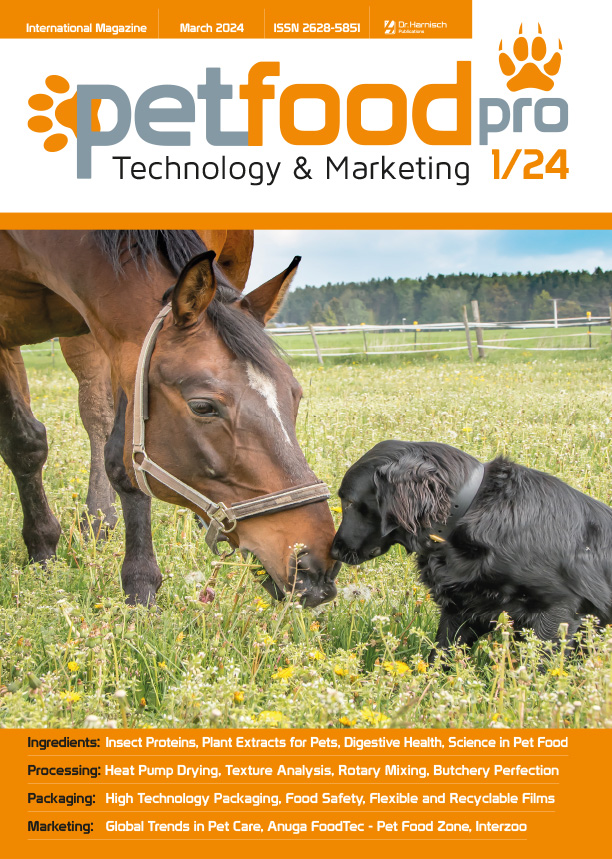TikTok Content featuring animals is extremely popular on social media. Numerous funny pictures or videos of pets are uploaded on Facebook, Instagram and the like every day: animal selfies of clumsy puppies, the pug whose everyday life we are allowed to share, or the cat that has just had a mishap. Some of the animals even have their own accounts in which they are the main actors – with thousands of followers and a community that always wants to see more. The animals are cute, sometimes appear clever or clumsy, and give the viewers a lot of pleasure. For social media users, these videos are often the perfect distraction from everyday life. But often hidden behind them is animal suffering.
More and more of these supposedly “funny” animal videos with millions of clicks show acts that are relevant to animal welfare. The University of Veterinary Medicine Hanover has dealt with this topic in a research project on “Dealing with pets on social media”. The focus is on non-obvious animal cruelty content that may seem harmless to the layperson. The aim of the project was to investigate content, the distribution of animal welfare-relevant representations on various social media platforms, as well a the analysis of social perception. Through a survey, deep insights into the perception of animal videos on social networks could be obtained and statistically evaluated. For this purpose, Dr. Michaela Fels and Alina Stumpf from the Institute of Animal Hygiene, Animal Welfare and Farm Animal Ethology at the University of Veterinary Medicine Hanover Foundation have scientifically analyzed animal videos with content relevant to animal welfare on YouTube, Instagram and TikTok since June 2022. These videos are often uncritically uploaded and disseminated on social media and without knowing that the content means suffering for the animals. The University of Veterinary Medicine Hanover now wants to educate and raise awareness on this topic in order to counteract the distribution of animal welfare-relevant content. A final event on the research project now provided an opportunity to learn about the project and about the intervention strategies that have been developed.
Wide range of topics
At this event, the portrayal of pets in social media relevant to animal welfare was examined from various aspects. Dr. Claudia Riesmeyer from the Institute for Communication Studies and Media Research at Ludwig Maximilian University, Munich, spoke on the topic “My second self. Visual Self-Representation of Young Adults in Social Networks”. Social media are playing an increasingly important role in the lives of young adults and are used intensively. They have a networking character and a kind of diary function to remind oneself what one has experienced. Visual self-representation serves primarily to control the impressions that (relevant) others have of one’s self. It is a process that changes and will be adapted if necessary. The focus is primarily on personal themes and motifs as well as on current events. Everything that has to do with the user’s personal world is used for visual self- portrayal. Pets are often even used as part of the Facebook profile. However, it is rarely reflected whether this is harmful for the animal or not.
Dr. Michaela Fels (from the University of Veterinary Medicine Hanover Foundation) provided information about the research and survey conducted as part of the research project “Dealing with pets on social media.” Social media are becoming increasingly important in communication. There are also more and more representation of pets. The supposedly funny depictions, however, are not necessarily fun for the animals. If content relevant to animal welfare is posted or shared, it reaches a broad mass of people in all walks of life. There is a risk of users becoming numb or desensitized.
These kind of depictions could become normal and encourage imitation. Image and video content may involve animal suffering, for example, when animals are trapped, when they suffer a mishap, when owners participate in a challenge with their animals, when animals are shown in costumes, in human clothing, or in a human posture that may result in painful malpositions or injuries, or when animals do something out of the ordinary (facial expressions, gestures, vocalizations). Often, sick animals or animals with physical ailments are intentionally portrayed in a funny way, such as in the video “Dancing Dogs,” in which animals move due to itching or pain. Sometimes wild animals, such as foxes or raccoons, are shown in human surroundings or in human positions.
In addition, a problem can be the propagation of torture breeding in pet species, such as pugs, because this can encourage people to acquire such breeds as well. Characteristics of torture breeding include hairlessness, short-headedness, short stature, excessive skin folds, or folded ears in cats. Often false knowledge or half-knowledge is conveyed, which is associated with the promotion of certain products. The videos are clicked millions of times and Petfluencer achieve a very high reach and high advertising revenue with the suffering of the animals. The survey to determine perceptions of animal suffering found that for 46% of respondents, animal suffering was often to very often recognizable in videos. Almost the same number of respondents (47.9%) said they themselves had even filmed an animal because it might make a funny video. The results of the research project form the basis for the public relations work of the University of Veterinary Medicine Hanover to educate about how to recognize animal suffering in social networks and how best to respond to it.
Recognizing stress and discomfort in animals
Dr. med. vet. Kerstin Röhrs, specialist veterinarian for behavioral science in the Joint Practice for Behavioral Therapy &DogSchool,Hamburg,spokeonthe topic”Recognizingstressanddiscomfort -anoverviewoftheexpressivebehavior ofdogsandcats”.Tounderstandthebody language in dogs and cats, it is important to distinguish which are the causes
and which are the signals for stress. The expressive behavior of an animal is not only the pure body language, such as facial expressions, gestures, an erect or crouched posture, fast or slow movements. Also tactile signals via touch as well as olfactory signals via smells (e.g. in case of fear or stress), acoustic signals, such as squeaking, squealing, whining, barking, or certain postures, such as a low front body, ears standing up or back, a tail held low, lips pulled far back, a curled tongue as well as standing up backhaircangiveinformationaboutthe emotional state of the animal. In addition, certain behaviors may indicate stress and agitation, such as humility or avoidance, flight, jumping up, insecurity, aggressive behavior, vocalizations, turning away, unsteady gaze, wagging, and jumpiness. In cats, stress and discomfort are much harder to recognize, usually they show more aggressive behavior. Dr. Kerstin Röhrs strongly advises to accept the stress and to take it seriously: Animals are not actors, if an animal shows stress behavior, then it also has stress. Practical assistance for pet owners to help recognize stress and distress in their dogs and cats is covered in many books, and training opportunities are offered in dog schools.
Alina Stumpf, a veterinarian at the University of Veterinary Medicine Hanover, also reported on the research project. In order to be able to recognize animal suffering in videos, one must know the body language and behavior of an animal. In dogs, certain characteristics and behaviors may indicate, for example, a disturbed relationship with its owner. These include wide open eyes, averted gaze or withdrawn ears, the dog shows its teeth but at the same time placates with its eyes, the dog tends to increase distance, it shows de-escalating behavior or defensive threatening behavior.
Videos of dogs and small children are also particularly popular. Very often, however, there is little knowledge about the behavior of the animal, for example, in a video in which a toddler chases a dog. The dog, however, does not play, but always keeps its distance, flees and shows increased body tension. Before a dog finally bites, it shows a lot of appeasing behaviors that should not be ignored, otherwise it can become very dangerous. A challenge can always escalate, e.g. if a dog is supposed to kiss a toddler.
On social media, there are also many challenges with cats, in which cats do things that they would not normally do. Then the cat’s face shows clear symptoms of stress, such as wide-open pupils. Unfortunately, such videos are very successful and are viewed very often. A lot of money is made at the expense of the animals. Alina Stumpf advised not to like or share these posts. Even a negative comment or dislike has a positive effect because the algorithm considers it interesting and therefore makes it even more popular. It is best not to view these videos at all, but to report them to the respective platform and inform them about the topic. To assess social media accounts, the University of Veterinary Medicine Hanover has developed a Petfluencer animal welfare guide. This can be used, for example, by pet retailers and the pet food industry, who like to use petfluencers’ accounts for advertising purposes, to see whether they are spreading videos of animal suffering. In this way, cooperation partnerships can be checked in advance, in order to decide whether to work with certain petfluencers or not.
Global activities against animal suffering
Wiebke Plasse, Head of Communications at the Welttierschutzgesellschaft e.V., Berlin, reported on the work of the World Animal Protection Society (WTG). WTG operates around 40 animal protection projects, campaigns and programs in 21 countries on four continents. Since October 2020, the animal protection organization has been campaigning for an end to the previously unrestricted depiction of animal suffering on social media with the #StopAnimalSuffering campaign on social networks. By increasing and imitating animal suffering, animal suffering can be created and socially normalized. The heart of the campaign is a guide for identifying animal suffering content, which can be used to distinguish whether posted content was published by an animal protection organization or whether it is a staged rescue. Other topics in the campaign work include the uncritical portrayal of torture breeding.
A glorifying portrayal of torture breeding leads to increased demand for these animals. Disrespectful treatment of animals must be banned, as this could encourage imitation and in turn end in situations of animal suffering. The depiction of cruel violence against animals must also be prohibited. To stop animal suffering on social media, the pressure on social networks must continue to be high. The aim is to create legislation that obliges the operators of social networks to act independently, to examine all relevant content carefully, to delete it immediately if animal suffering is suspected and to report the creators to the responsible authorities. Therefore, community standards regarding explicit animal suffering should be revised. Not just the operators of social networks should recognize animal suffering and respond accordingly. Users are also required to be aware of animal welfare so that animal suffering can be identified and stopped. If in doubt, one should choose the animal and not distribute the content.
Myrto Joannidis presented the campaign work of the Susy Utzinger Foundation for Animal Welfare (SUST ). With the campaign “#DeinLikeSeinLeid – Animal protection also online”, the animal protection organization provides information about how animal suffering can be recognized and reported and calls for action against providers of animal protection-related videos. So far, various webinars have been held on how to deal with animals in social networks, how animal suffering can be recognized and how you can help these animals. There is also a social media campaign and a focus campaign against holidaypostswithanimals,inwhich,for example, wild animals are depicted in human disguises or postures trivializing possible dangers. A killing video in Switzerland recently caused a particular stir: a few young people kick a cat and torture it until it dies, they laugh and then play football with it. The video goes viral on Snapchat and Tiktok in three days. Finally, social network providers are also responsible, as they benefit from repost reactions – including those that draw attention to animal cruelty – and thereby increase their reach. Despite animal cruel content, some social platforms intervene far too late, not at all, or in only particularly serious cases and allow millions of users around the world to have unrestricted access to images and videos of violent attacks on animals. Together with animal protection organizations from all over the world, the Susy Utzinger Foundation addresses social networks with combined forces on a global level in order to take joint action against animal suffering.

In a final panel discussion, various activities against the depiction of animal suffering were reported. Dr. med vet. Olaf Türck, Fressnapf Tierfutter GmbH, pointed out the importance of not including animal suffering in advertising. Fressnapf has been taking action against depictions relevant to animal welfare for 10 years and has developed its own influencer guide to recognize situations when animals are suffering. This guide is intended to help companies develop greater expertise and judgment in identifying and, if necessary, blocking animal welfare-related posts. Pet retailers should not work with pet- influencers who post content that depicts animal suffering. However, these petinfluencers should not be completely excluded, but rather included in an informative manner.
In order to prevent animal suffering, it is always important to impart correct knowledge of animals. Responsible treatment of animals begins in childhood. Andrea Lipka from the Animal Protection Association in Austria reported on how children can learn to treat animals with care and respect. The animal protection association also conveys that animal protection knowledge can bring a lot of joy. Children are very receptive to this topic and understand immediately what it is about. It is also important to create a positive approach to this topic and show whatpositiveanimalvideoscanlooklike. The participants of the panel discussion also agreed not to support the depiction of torture breeding but rather to draw attention to it. A lot of money is still made by displaying problematic breeds on social networks. Ina Wingender launched the @ mopsaktivismus initiative on Instagram to raise awareness about the responsibility when acquiring such an animal and presenting it on social networks. Wingender unknowingly bought a pug himself years ago and has so far invested €23,000 in operation costs. Videos with torture or animal suffering should not only be condemned. It is important to take targeted action against publication and, if necessary, to take the necessary steps on your own initiative. Finally, Dr. Michaela Fels from the University of Veterinary Medicine Hanover explained the topic will remain relevant even after the project has been completed. The topic and the work has to be continued in order to reach and educate as many people as possible with your own social media presence.
For more information www.tiho-hannover.de/en

















